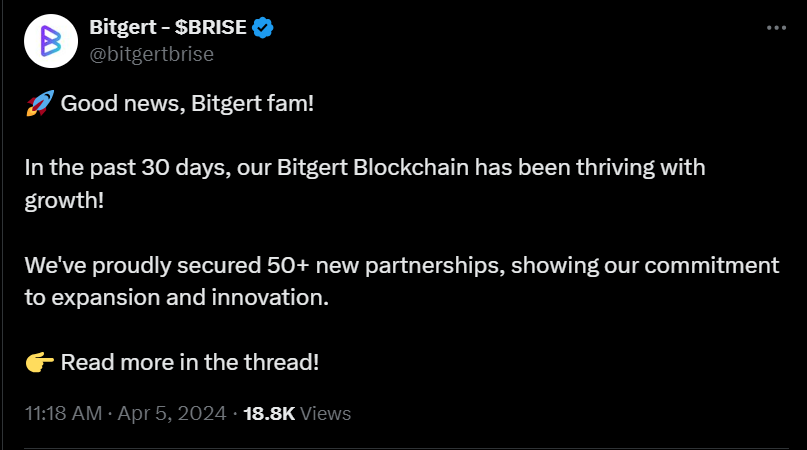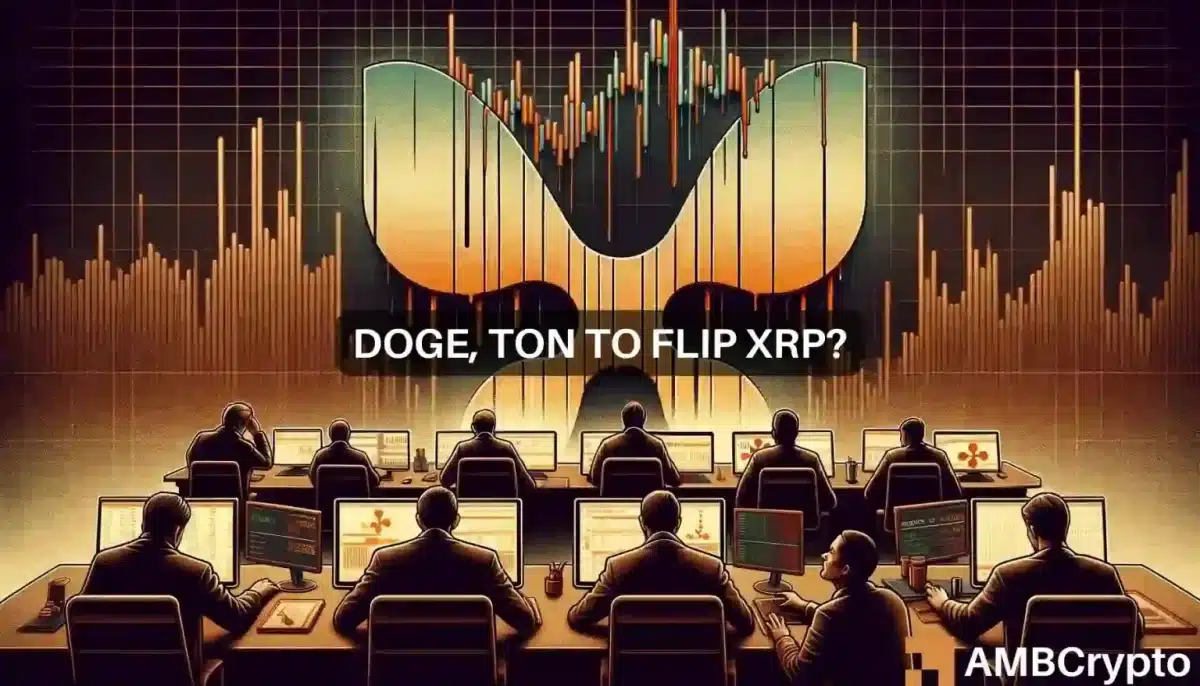In the tumultuous landscape of the cryptocurrency market, there exists a dichotomy of opinions, veering between commendation and apprehension. The impending Bitcoin halving event has become the focal point of discussions, igniting speculations of a potential upswing within the crypto domain. Enthusiasts and analysts alike anticipate Bitcoin to bask in a post-halving limelight, while concurrently forecasting a prosperous trajectory for alternative cryptocurrencies, known as altcoins. As of the latest market assessment on April 5, the cumulative market capitalization of altcoins soared to an impressive 314.687 billion dollars, underscoring their burgeoning significance.
Now, embarking on a deeper exploration, it’s imperative to unravel the intricacies that have rendered altcoins the preferred choice among consumers.
Factors Behind Altcoins’ Price
Since the birth of Bitcoin, the cryptocurrency realm has burgeoned into a vast ecosystem, welcoming over 9,000 alternative digital currencies, collectively known as altcoins. These altcoins have emerged as formidable contenders, offering an array of innovative features and applications that extend beyond the capabilities of Bitcoin itself. From facilitating decentralized governance systems to serving as data oracles for smart contracts, altcoins have diversified the cryptocurrency landscape in ways previously unimaginable.
Despite Bitcoin’s steadfast position as the preeminent cryptocurrency, revered for its role as a reserve asset and its pivotal function in the realm of digital finance, the market dynamics have evolved significantly with the proliferation of altcoins. While Bitcoin remains the cornerstone of many investors’ portfolios, its dominance is not unchallenged. Altcoins have carved out niches for themselves, often providing specialized solutions and catering to specific use cases that Bitcoin may not adequately address.
The correlation between Bitcoin’s price movements and those of altcoins is a phenomenon that has garnered considerable attention within the cryptocurrency community. While altcoin prices frequently mirror the fluctuations in Bitcoin’s value, there are instances where altcoins defy this trend, demonstrating their own unique market dynamics and investor sentiment. This intricate interplay between Bitcoin and altcoins underscores the complexity of the cryptocurrency market and highlights the diverse investment opportunities it offers.
As the cryptocurrency landscape continues to evolve, the upcoming fourth halving event in the Bitcoin network looms large, poised to unleash significant ramifications across the market. The prospect of a bullish trend following the halving event has captivated the attention of investors and analysts alike, with many speculating on its potential impact on altcoins. The allure of altcoins, particularly for new investors, lies in their lower entry barriers and the promise of exponential gains in a rapidly evolving market.
Moreover, the post-halving environment presents a unique opportunity for altcoins to shine as Bitcoin’s dominance faces scrutiny. With demand for Bitcoin potentially waning in the wake of the halving, altcoins stand poised to capture a larger share of the market and assert their relevance in the broader cryptocurrency ecosystem. This paradigm shift has fueled optimism among crypto analysts, who envision a future where altcoins play an increasingly prominent role in shaping the future of finance and digital assets.
In conclusion, the rise of altcoins represents a paradigm shift in the cryptocurrency landscape, offering investors a diverse array of opportunities and challenging the hegemony of Bitcoin. While Bitcoin remains a cornerstone of the market, the emergence of altcoins as viable alternatives underscores the dynamism and innovation inherent in the world of cryptocurrencies. As the market continues to evolve, the interplay between Bitcoin and altcoins will undoubtedly shape the future trajectory of digital finance, paving the way for a new era of decentralized innovation and financial empowerment.
Altcoins to consider
Despite being perceived as riskier compared to Bitcoin, altcoins offer greater potential for innovation and technological advancements. Therefore, it is advisable to diversify investment portfolios by including reputable altcoins such as Ethereum, PEPE, Bitgert, Solana, and others. Diversification across a range of cryptocurrencies can help mitigate risk while capitalizing on the potential growth and advancements within the altcoin market.
Solana
Solana stands as a groundbreaking platform, boasting a rich spectrum of smart contract applications that grant developers unparalleled freedom to architect decentralized solutions, forge innovative NFT creations, and cultivate robust DeFi ecosystems. Through its high-performance blockchain infrastructure, Solana offers a fertile ground for creativity and technological advancement in the burgeoning realm of decentralized finance and beyond.
In the tumultuous landscape of the cryptocurrency market, particularly amidst the turbulence witnessed during March, Solana’s resilience shone brightly. Despite the volatility prevailing in the broader market, Solana’s price trajectory exhibited remarkable indications of a potential upward surge, characterized by the emergence of a distinct bullish pattern. This trend not only underscored the underlying strength and confidence in the Solana ecosystem but also served as a testament to the platform’s capacity to weather market storms and emerge stronger.
Indeed, Solana’s ascent amidst challenging market conditions serves as a testament to its robust fundamentals, technological prowess, and growing community support. As a beacon of innovation in the blockchain space, Solana continues to attract developers, investors, and enthusiasts alike, fueling a vibrant ecosystem teeming with creativity, collaboration, and possibility.
In essence, Solana’s resilience and promising price action amid March’s market turbulence underscore its status as a formidable player in the cryptocurrency landscape, poised to redefine the future of decentralized applications, NFTs, and DeFi platforms. With its unwavering commitment to scalability, performance, and security, Solana stands as a beacon of innovation, driving forward the boundaries of what’s possible in the decentralized world.
Bitgert
Bitgert emerges as a beacon of potential within the expansive landscape of investment options, offering a compelling avenue for those seeking efficiency and innovation in the crypto space. The recent unveiling of the Dencun update within the Ethereum (ETH) ecosystem has served as a catalyst for Bitgert’s ascension. At its core lies the native cryptocurrency of the Bitgert blockchain, BRISE, which operates on its proprietary BRC-20 standard while maintaining seamless compatibility with the Ethereum Virtual Machine (EVM). This unique integration has swiftly garnered widespread attention from investors worldwide.
The Dencun upgrade, heralded as a monumental stride forward, has significantly slashed layer-2 transaction costs within the Bitgert ecosystem. This reduction in transaction fees has not only enhanced the platform’s appeal but has also ignited a fervor of interest among investors, who perceive Bitgert as a compelling investment opportunity amidst the dynamic crypto market.
What sets Bitgert apart from its counterparts is its remarkable transaction speed, standing proudly as the second-fastest cryptocurrency with an astonishing throughput of 100,000 transactions per second (TPS). Since its debut in 2021, Bitgert has facilitated over 25 million transactions, a testament to its robust infrastructure and growing user base. As of the latest market data, the price of BRISE is noted at $0.000000207711, accompanied by a robust 24-hour trading volume of 2.4 million.
While Bitgert experienced a noteworthy surge in price from January to March, the subsequent decline in its value underscores the inherent volatility of the cryptocurrency market. This volatility, often exacerbated by the influence of Bitcoin maximalists, underscores the interconnected nature of the crypto ecosystem. Indeed, fluctuations in Bitcoin’s value exert a direct and profound impact on the prices of alternative cryptocurrencies, including Bitgert.

However, amidst the turbulence, there exists a beacon of hope for investors eyeing the resilience of cryptocurrencies from established networks like Ethereum and Solana. These stalwarts of the crypto world are poised to rebound vigorously once the speculative frenzy surrounding Bitcoin subsides, reaffirming the enduring allure and potential of innovative blockchain technologies.
In conclusion, Bitgert stands as a shining exemplar of innovation and potential within the dynamic realm of cryptocurrencies. With its robust infrastructure, impressive transaction speeds, and growing ecosystem, Bitgert beckons investors to embrace the future of finance with confidence and conviction.
Ethereum
Ethereum remains at the forefront of decentralized applications and smart contracts, maintaining its position as a leading platform. Recently, its price surged to approximately $3,700, marking a temporary peak. However, subsequent profit-taking activities slowed down the upward trajectory, initiating a phase of ongoing price correction.
The emergence of a rising wedge pattern suggests the potential for a significant sell-off in ETH. Investors may aim at support levels around $3,200 and $3,000 as potential targets, with a drop to $3,000 being plausible. Additionally, the recent Dencun upgrade has contributed to the increase in the value of ETH.
Given its correlation with Bitcoin, there’s a growing anticipation of heightened demand for Ethereum as the halving event for Bitcoin approaches. This anticipation further accentuates the potential for an upward trend in Ethereum’s demand and value.



